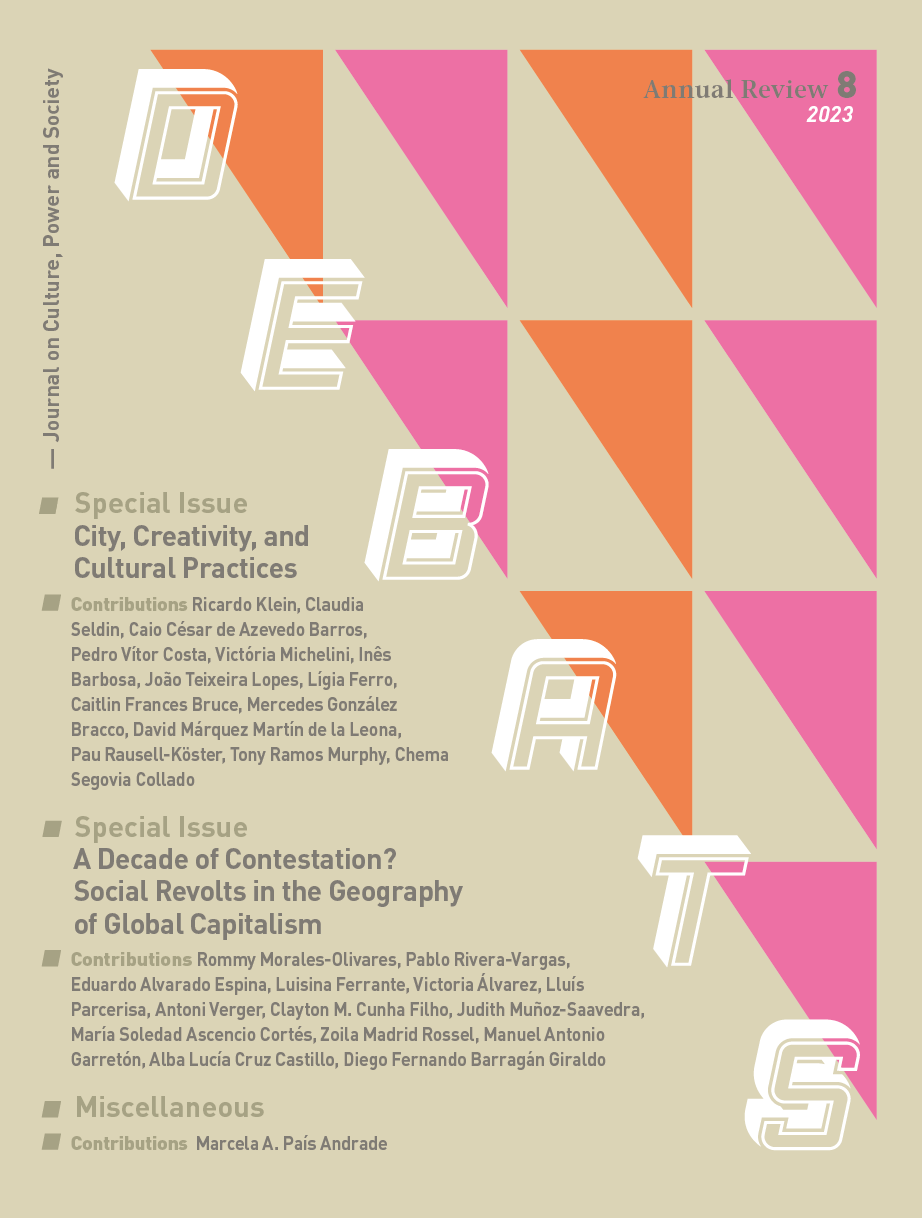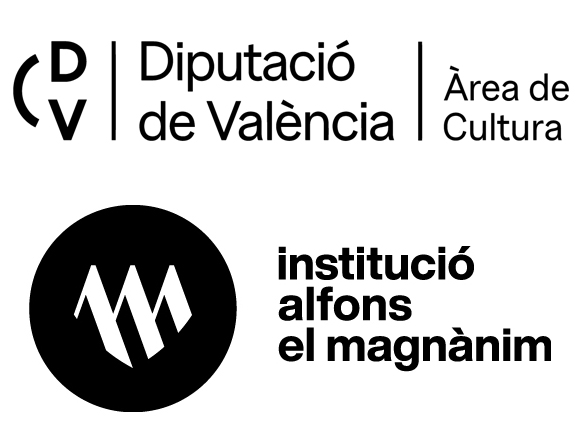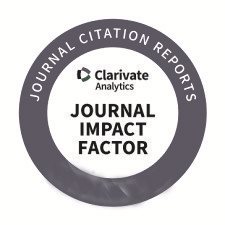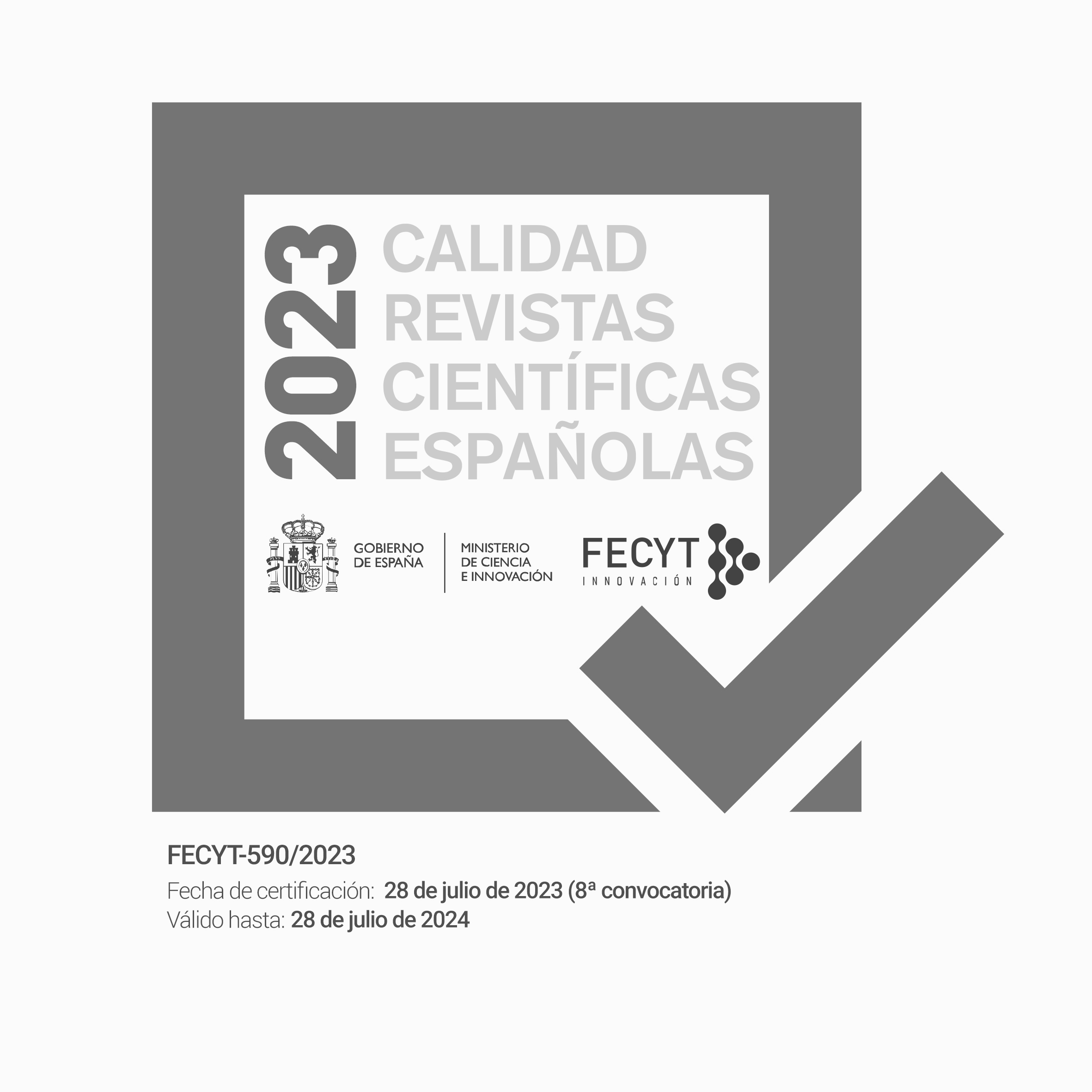Mobilitat, efimeritat i economies turístiques: tour grafiter practicant running a León, Guanajuato
Paraules clau:
turismo; arte urbano; México; imaginarios urbanos; movilidad; efímeroResum
En aquest article analitze la creació d’un tour per a runners que mostra l’art del grafit per encàrrec (o art urbà) a León, Guanajuato, Mèxic. Fundats el 2017, els recorreguts són part d’un canvi econòmic i cultural molt gran que allunya la ciutat de les seues arrels agrícoles i industrials. Des de la dècada dels 90, León ha buscat l’estatus de ciutat global sense deixar d’intentar reivindicar connexions amb la tradició. Pràctiques creatives com l’art urbà ajuden a cultivar una imatge urbana atractiva. Argumente que els recorreguts fan destacar tres temes al bell mig tant del debat de les ciutats creatives com dels desafiaments i les friccions que hi ha en la institucionalització del grafit: mobilitat, efimeritat i economia.
Descàrregues
Referències
Austin, J. (2001). Taking the train. New York: Columbia University Press.
Banet-Weiser, Sarah. "Convergence on the street: Rethinking the authentic/commercial binary." Cultural Studies 25, no. 4-5 (2011): 641-658.
Bloch, S. (2020). Going all city. Chicago: University of Chicago Press.
Bruce, C.F. (2016): “Tour 13: From Precarity to Ephemerality,” GeoHumanities, DOI: 10.1080/2373566X.2016.1234352 Bruce, C.F. (2019). Painting Publics: Transnational Legal Graffiti Scenes as Spaces for Encounter. Philadelphia: Temple University Press.
Camarena, D. (2001). “Recopilación gráfica de graffiti en León,” unpublished undergraduate thesis, Universidad Iberoamericana León.
Campbell, B. (2003). Mexican murals in times of crisis. Tucson: University of Arizona Press.
Cockcroft, E., Weber, J. and Cockcroft, J. (1977). Toward a People's Art. New York: Dutton.
Coffey, M. K. (2012). How a revolutionary art became official culture. Durham: Duke University
Press. Ferrell, J. (1993). Crimes of Style: Urban Graffiti and the Politics of Criminality. Garland.
Galvis, J. P. (2017). Planning for urban life: Equality, order, and exclusion in Bogotá's lively public spaces. Journal of Latin American Geography, 16(3), 83-105.
García Canclini, N. (2001) Consumers and Citizens: Globalization and Multicultural Conflicts, trans. George Yúdice. Minneapolis: University of Minnesota Press.
Gómez Vargas, H. (2020). Personal communication with author.
Hernández Sánchez, P. (2008), La Historia de Graffiti en Mexico 2.0. Mexico: IMJUV
Hernández, L. (2018). Personal Interview, December 13. León Guanajuato.
IMPLAN (2018). Programa “Construcción de EntornosSeguros,” https://implan.gob.mx/pdf/planeacion/Programa_de_ Gobierno_2018-2021.pdf, p. 45-46, Accessed February 2,2022
Instituto Municipal de Juventud. (2020). Creatividad Urbana: el arteen las calles de León. León, Guanajuato: Instituto Municipal de Juventud.
Janoschka M. and Sequera J. (2016). “Gentrification in Latin America: Addressing the Politics and Geographies of Displacement,” Urban Geography volume 37, no. 8: 1175-1194.
Jasso, R. (2013). “León Pinta Su Pared,” Revista Cultura Alternativa, Publication of the Instituto Cultural de León, no 33, p.9. Keim. (2016). Personal Interview, May 2. León Guanajuato.
Latorre, G. (2019). Democracy on the Wall: Street Art of the Post-dictatorship Era in Chile.
Columbus: The Ohio State University Press.
Lennon, J. (2022). Conflict Graffiti: From Revolution to Gentrification. Chicago: University of
Chicago Press. MacDowell L. (2019). Instafame: Graffiti and Street Art in the Instagram Era, United
Kingdom, New York: Intellect Books. McAuliffe, C. (2012). Graffiti or street art? Negotiating the moral geographies of the creative city. Journal of Urban Affairs, 34(2), 189-206.
McRobbie, A. (2018). Be creative: Making a living in the new culture industries. London: John Wiley & Sons.
Merrill, S. (2021). Buffing and buffering Blu: the societal performance of street art, heritage erasure and digital preservation in Berlin. International Journal of Heritage Studies, 27(6), 601-616.
Merriman, P., Jones, R., Cresswell, T., Divall, C., Mom, G., Sheller, M., & Urry, J. (2013). Mobility: Geographies, histories, sociologies. Transfers, 3(1), 147-165.
Mould, O. (2018). Against creativity. New York: Verso Books. Nickis. (2015) Personal Interview, May 11. León Guanajuato. Orion (2015) Personal Interview, May 13, León Guanajuato.
Ortiz van Meerbeke, G., & Sletto, B. (2019). ‘Graffiti takes its own space’ Negotiated consent and the positionings of street artists and graffiti writers in Bogotá, Colombia. City, 23(3), 366-387.
Pabón-Colón, J. N. (2018). Graffiti Grrlz: Performing Feminism in the Hip Hop Diaspora. New York: NYU Press.
Pezzullo, P. C. (2003). Touring “Cancer Alley,” Louisiana: Performances of community and memory for environmental justice. Text and Performance Quarterly, 23(3), 226-252.
Rangel, P. (2019). Personal Interview, September 17, Mexico City, Mexico.
Richards, G. (2011). “Creativity and Tourism: The State of the Art,” Annals of Tourism Research 38(4), 1225-1253. Rodríguez, C. (2017). “Plasman artistas un genio en panteón,” El Sol de León, October 31, <https://www.elsoldeleon.com.mx/local/pintan-a-la-muerte>. Access date: March 2, 2019.
Rolston, B. (2003). Changing the political landscape: murals and transition in Northern Ireland. Irish Studies Review, 11(1), 3-16.
Rius-Ulldemolins, J. (2014). Culture and authenticity in urban regeneration processes: Place branding in central Barcelona. Urban studies, 51(14), 3026-3045.
Salazar, N. B. (2018). Theorizing mobility through concepts and figures. Tempo Social, 30(2), 153-168. Spok (2015). Personal Interview, May 11, León Guanajuato.
Swanson, K. (2013). Zero tolerance in Latin America: Punitive paradox in urban policy mobilities. Urban Geography, 34(7), 972-988.
Téllez Valencia, C. (2014). La construcción de la tecnocraciaen León y suproyectoinacabado de
participación social. Relaciones. Estudios de historia y sociedad, 35(138), 209-243.
Wilson, D. (2017). Making Creative Cities in the Global West: The New Polarization and
Ghettoization in Cleveland, USA, and Glasgow, UK. In Inequalities in Creative Cities (pp. 107-127). New York: Palgrave Macmillan.
Young, A. (2010). Negotiated consent or zero tolerance? Responding to graffiti and street art in Melbourne. City, 14(1-2), 99-114.
Young, A. (2013). Street art, public city: Law, crime and the urban imagination. Routledge.
Wes (2015). Personal interview, May 13, León Guanajuato.
Descàrregues
Publicades
Com citar
Número
Secció
Llicència
Sense perjudici del que disposa l'article 52 de la Llei 22/1987 d'11 de novembre de Propietat Intel·lectual, BOE del 17 de novembre de 1987, i conforme a aquest, els/les autors o autores cedeix/en a títol gratuït els seus drets d'edició, publicació, distribució i venda sobre l'article, per tal que siga publicat a Debats. Revista sobre cultura, poder i societat.
Debats. Revista de cultura, poder i societat es publica sota el sistema de llicències Creative Commons segons la modalitat “Reconeixement – NoComercial (by-nc): Es permet la generació d’obres derivades sempre que no se’n faça un ús comercial. Tampoc no es pot fer servir l’obra original amb finalitats comercials”.
Així, quan l’autor/a envia la seva col·laboració, accepta explícitament aquesta cessió de drets d’edició i de publicació. Igualment autoritza Debats. Revista de cultura, poder i societat la inclusió del seu treball en un fascicle de la revista perquè es puga distribuir i vendre.











